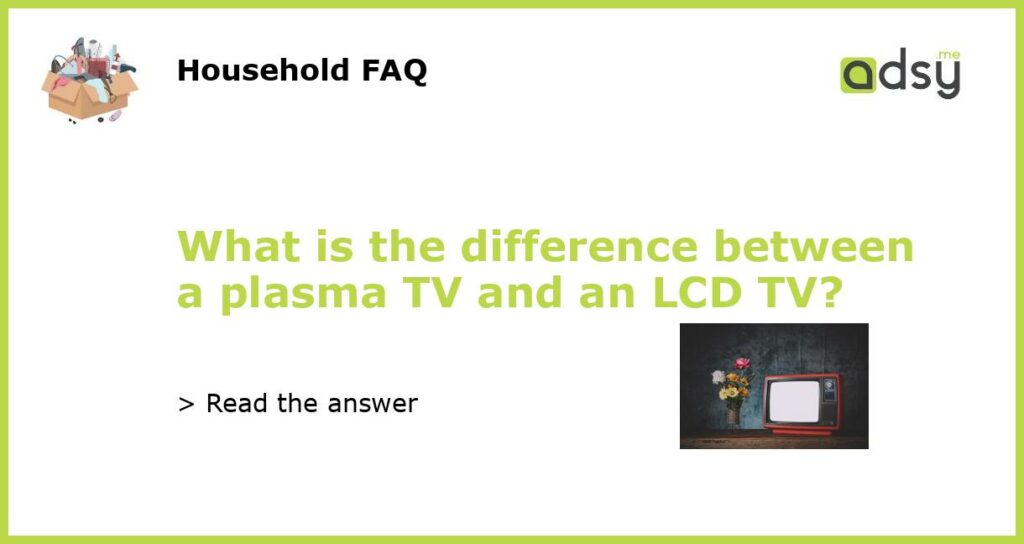Plasma TV vs. LCD TV: Understanding the Key Differences
With the advancement of technology, the market offers a wide range of options when it comes to television sets. Two popular choices are plasma TVs and LCD TVs. While both provide exceptional picture quality and viewing experiences, there are some notable differences between them. Understanding these differences can help you make an informed decision when purchasing a new TV. In this article, we will dive into the contrasting characteristics of plasma and LCD TVs.
How They Work
Plasma TVs use small cells containing electrically charged ionized gases that emit ultraviolet light when electronically stimulated. These UV rays then strike phosphors on the screen that produce visible light, forming a colorful image. On the other hand, LCD TVs use liquid crystal displays comprised of liquid-filled cells that manipulate light to produce an image. The light source for an LCD TV comes from fluorescent lamps that are positioned behind the screen.
Image Quality
One of the main differences between plasma and LCD TVs is their image quality. Plasma TVs are known for their deep blacks and superior contrast ratios. They can display true blacks because the individual plasma cells can be completely turned off, resulting in a more realistic image. However, LCD TVs often struggle to produce perfect blacks due to the backlighting from the fluorescent lamps. This can result in some loss of detail in dark scenes. Nonetheless, LCD TVs have made significant improvements in recent years, and their image quality has become more comparable to that of plasma TVs.
Viewing Angle
Another area where plasma TVs outshine LCD TVs is in terms of viewing angle. Plasma technology allows for more consistent image quality regardless of the viewing angle. This means that even if you’re sitting off-center or viewing the TV from an extreme angle, the picture quality remains largely unaffected. LCD TVs, on the other hand, may exhibit color fading or distortion when viewed from an angle. This makes plasma TVs a better choice for larger rooms or if you tend to have a lot of people watching from different positions.
Energy Efficiency
Energy efficiency is an important consideration for many consumers, especially being mindful of electricity consumption. In this aspect, LCD TVs have the upper hand. Plasma TVs consume more electricity due to the mechanism behind their operation. The fluorescent lamps used for backlighting in LCD TVs require less power than the ionized gases in plasma TVs. If environmental sustainability and reducing energy costs are priorities for you, an LCD TV may be the better choice.
Lifespan and Burn-In Risk
When it comes to lifespan, LCD TVs typically have a longer average lifespan than plasma TVs. The cells in plasma TVs have a finite life span, which can result in gradual deterioration of image quality over time. Additionally, plasma TVs are prone to burn-in, especially if static images are displayed for extended periods. Burn-in occurs when a static image is displayed for too long and leaves a permanent imprint on the screen. LCD TVs do not suffer from this issue, making them a more durable option in the long run.
In conclusion, the choice between a plasma TV and an LCD TV ultimately depends on your personal preferences and specific needs. Plasma TVs offer deeper blacks, better contrast ratios, and wider viewing angles. However, LCD TVs are more energy-efficient, have a longer average lifespan, and do not suffer from burn-in issues. Consider your priorities and budget, and be sure to compare the specifications and features of different models to make an informed decision on which type of TV is best for you.






